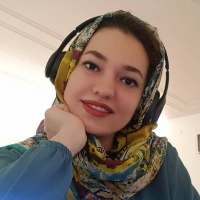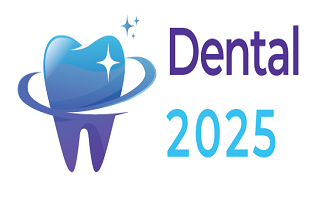Dental 2025

kerman Medical University, Iran
Abstract:
Aim : Pleomorphic adenoma is the most common benign tumor of the salivary glands. Its gender tendency is in females and mostly in the age of 20-45 years. mixed tumor has a firm consistency and no bone involvement. The mocusal memberan on it is healthy and has a normal color. It grows slowly and expands slowly.The parotid region, as the major salivary gland and the minor salivary gland, especially the palatal is the main site of this lesion. Cases of malignant changes have been found in it and it can turn into carcinoma. Case presentation : The patient is an 11-year-old girl without any underlying disease who referred to the outpatient clinic of Maxillofacial Surgery in Bahonar Kerman Hospital in Iran. The patient complained of a swelling in the left plat region, which he said had started about three months ago and was getting bigger. In examining the consistency of the lesion, it was firm and its color was pink like the mucosa of the normal palate. The uniformity of the mucosa was preserved on it. The dimensions of the lesion were about 3 x 2.5 square centimeters. The patient did not express pain or discomfort. First, a panoramic radiograph (OPG) was prepared. And then CBCT images were prepared with one millimeter slices. In the examination of the lesion, expansion is seen along with specific limits of the borders. The lesion did not destroy the palatine bone and did not invade the maxillary sinus. No pus drainage, inflammation, or redness was evident in the examination, and tenderness was not reported by the patient.then she refered to the endodontics part for examination of vitality tests. All of the teeth were vital. After performing diagnostic work, the patient was prepared for biopsy and enucleation and curettage of the lesion. After explaining to the patient and his parents and obtaining informed consent for the treatment and surgery. At first aspiration was done and the result was negative, then a sulcular incision was made from the area of the 4th upper right tooth to the 7th upper left mesial. After dissection, the mass was completely removed and enucleated. The mucosa of the floor of the nose remained healthy, and the area was completely curettage with a curet while maintaining the health of the nasal mucosa. Soft tissue sutured with 0-4 vicryl. Then, she underwent periodical follow-ups and the sample was sent for pathology examination. And the answer was diagnosed by seeing epithelial and myoepithelial cells in a chondromyxoid field with a capsule with well defined border, Pleomorphic Adenoma.Discussion & Conclusion : Minor salivary glands are scattered throughout the upper respiratory-digestive system and their number is between 450-1000 and more in the oral cavity. (13) In a study conducted by Tselcos and his colleagues in 2022, the most common pleomorphic site of oral adenoma was diagnosed in the palatal region. (14) There is a difference of opinion in the treatment of pleomorphic adenoma of the palate. Some believe that enucleation with preservation of the upper mucus and some suggest extensive excision. Due to the nature of the capsule, which of course is thick in some patients and thin in some patients and attached to the palatal mucosa or absent (1), wide excision with a safe margin of 1 cm is suggested by most surgeons. excision and shaving of the palatal bone in the form of a ostectomy was not needed to reduce the recurrence of the lesion, because the nature of the tumor is not an osteoblast stimulator for bone formation.
Biography:
I am Dr.Yeganeh Arian. I am 31 years
old and I come from Iran. I am Oromaxillofacial surgeon. I wrote some papers about robotic surgery, Artificial
intelligence in surgery, case reports about
Congenital Syngenathia, Mucormycosis in palatal region of a patient of COVID
and my presentation about Pleomorphic adenoma in palatal region of a young
patient.
